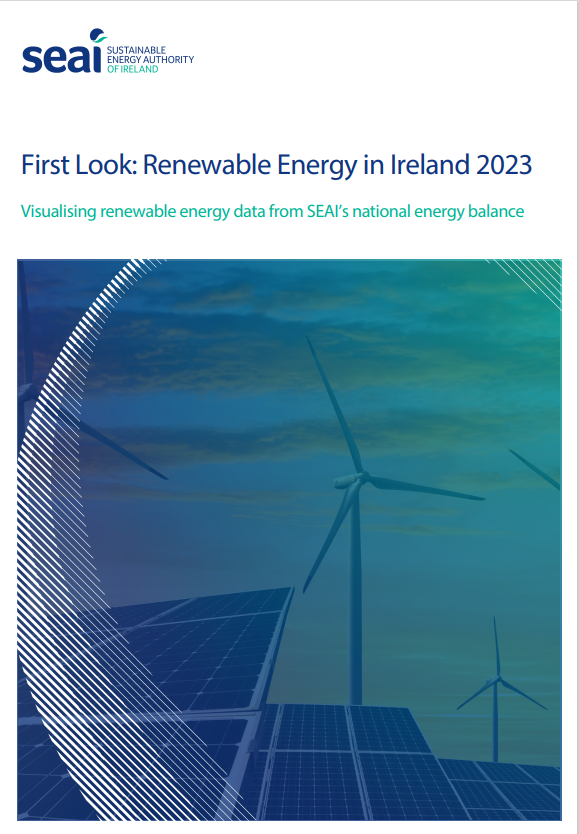Renewable energy in Ireland
The First Look: Renewable Energy in Ireland report presents data on renewable energy from SEAI's National Energy Balance and related statistical reporting.
This report provides a detailed breakdown of renewable energy use in Ireland over the last 10-years:
- Supply - indigenous production, imports, and exports
- Capacity - maps of wind, solar-PV, and hydro-electric generation capacity
- Transformation - input to electricity generation
- Demand - direct end-user consumption
Additionally, this report provides provisional estimates of Ireland's 2023 renewable energy share (RES) results for electricity, transport, and heat targets set-out under the EU's Renewable Energy Directive, Ireland's Climate Action Plan (CAP), and the National Energy and Climate Plan (NECP).
Key Points of Interest
Renewable Energy Supply
- Ireland's energy supply remains heavily dependent on imported fossil fuels. In 2023, 82.6% of Ireland's energy came from fossil fuels.
- Ireland set a record high of 23.38 TWh in renewable energy use across electricity, transport, and heat for 2023.
- Ireland's use of renewables in 2023 helped avoid 7.4 MtCO2.
Renewable Energy Use
- In 2023, about two-thirds (67.4%) of Ireland's renewable energy went to electricity generation, and one-third (32.6%) was directly consumed by end-users.
- In 2023, 40.7% of Ireland's electricity supply came from renewable energy, up from 38.6% in 2022.
- Just over a third (33.7%) of our electricity came from wind in 2023.
- Solar-PV generation accounted for 1.9% of electricity supply in 2023, which is the equivalent of providing all the country's electricity needs for 1 full week.
- The annualised average biofuel-blend in road diesel was 8.4% (energy basis) in 2023, up from 6.5% in 2022.
- The annualised average biofuel-blend in road petrol was 4.2% (energy basis) in 2023, up from 3.2% in 2022.
Renewable Energy Targets
The following are the provisional values for the share of renewable energy in Ireland's gross final consumption of energy in 2023, calculated in accordance with the EU's recast Renewable Energy Directive (RED II) and associated guidance from Eurostat:
- Overall share of energy from renewable sources in gross final consumption (RES-overall) was 14.6%.
- Share of energy from renewable sources in gross final consumption of electricity (RES-E) was 38.9%.
- Share of energy from renewable sources in final consumption of energy the transport sector (RES-T) was 7.6%.
- Share of energy from renewable sources in gross final consumption of energy in heating and cooling (RES-H) was 7.2%.
